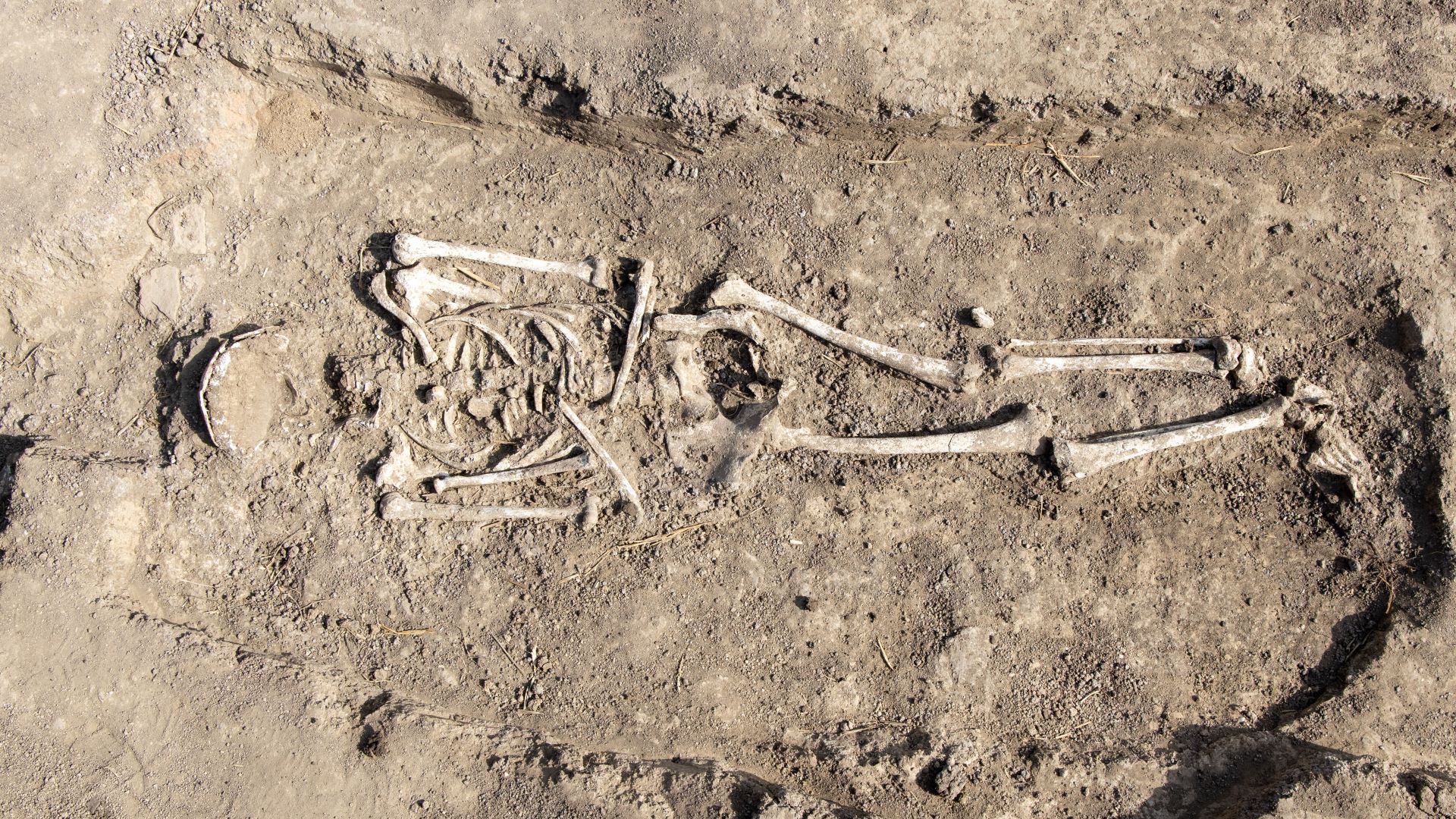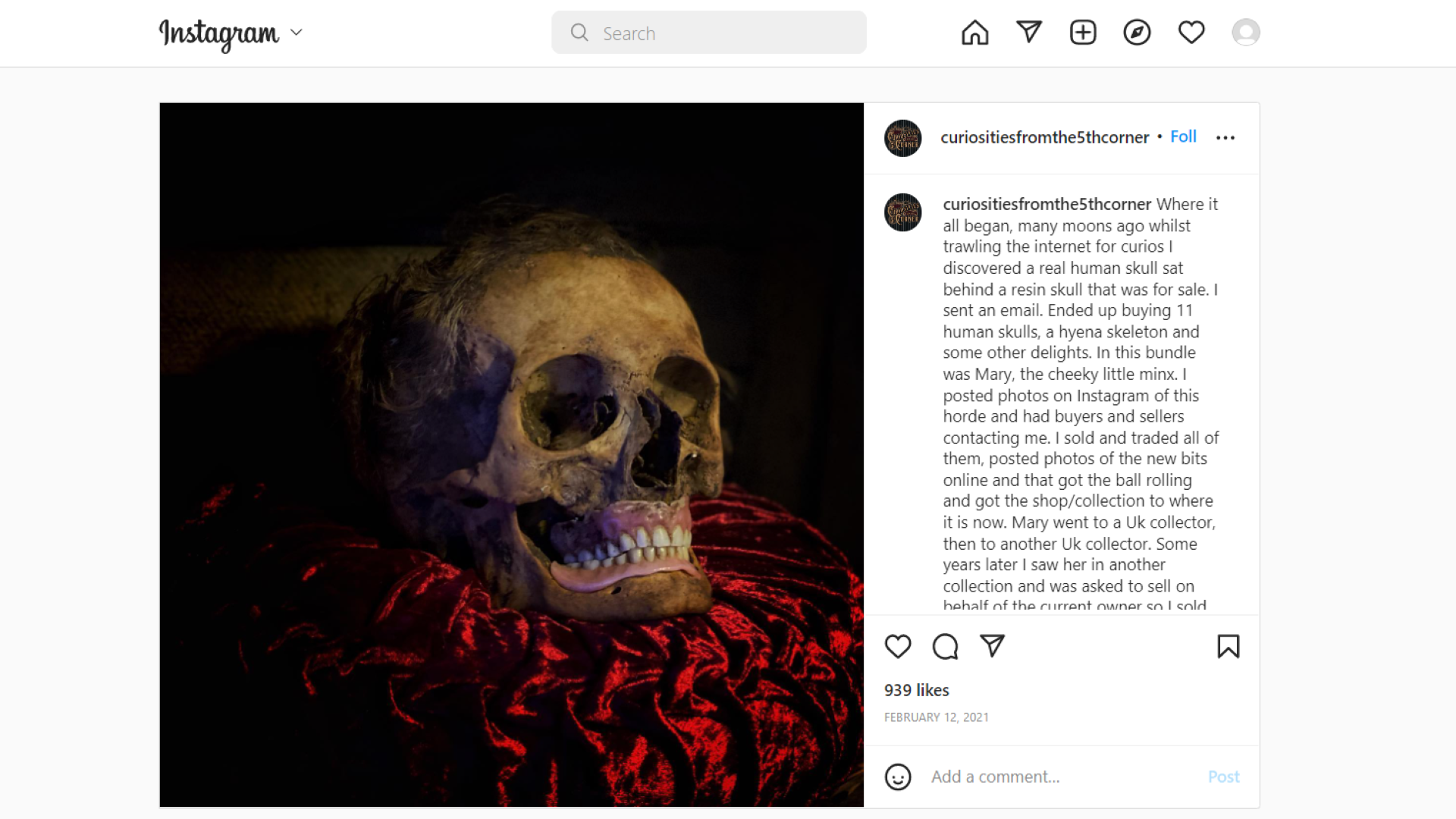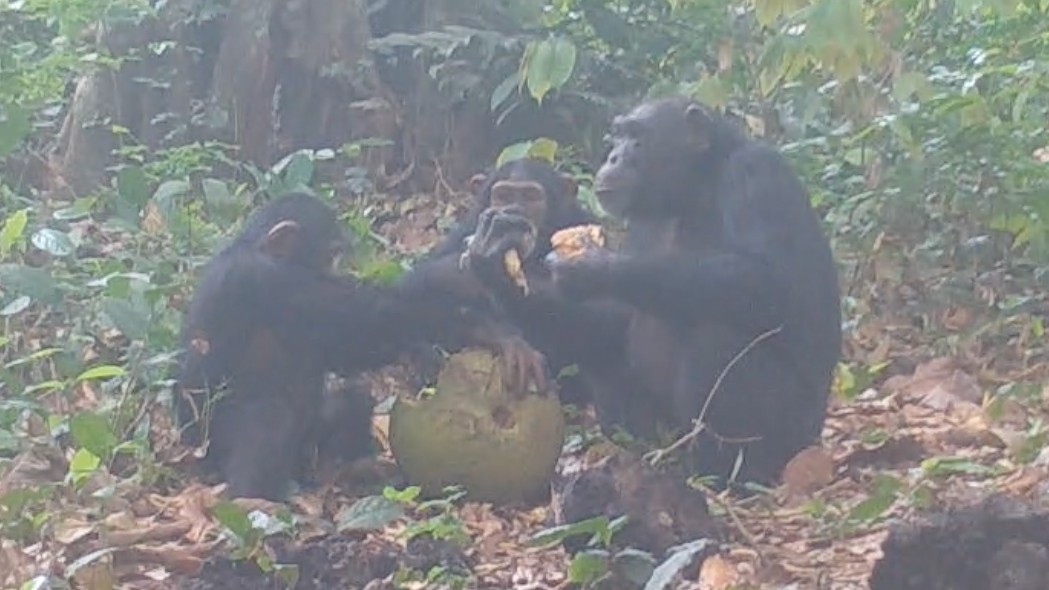Grave robbing is feeding a macabre market currently booming in the UK
Grave robbing appears to be a growing problem in the human remains trade.

Criminals are stealing skulls and other human remains from graves to supply the largely unregulated online market for human remains, a Live Science investigation has found.
One reason for this trend: Facebook and Instagram make it easy to buy and sell human remains, and it's often impossible for buyers to know where those remains come from, because the trade is international and sparsely regulated. In turn, the demand facilitated by these online marketplaces fuels a need for more specimens. Retired medical or anatomical specimens appear to be the most common remains on the market, but experts say that the taking of remains from places of rest to supply the trade is a growing problem.
"We're seeing an increase in vandalism to churchyards," Trish Biers, an osteologist and paleopathologist at the University of Cambridge, told Live Science. "We're seeing some crypts online, and we're having to contact them [the people working in the crypts] in response to what we think is a security risk."
Biers notes that this is happening in the U.K. as well as abroad. In 2018, 21 skulls were stolen from the ossuary at St Leonard's Church in Kent, South East England, with fears they could have been stolen to sell on the black market, Kent Online reported at the time. Researchers are worried that people may target these kinds of places more often to acquire skulls.
Biers coordinates a task force at the British Association for Biological Anthropology and Osteoarchaeology (BABAO) that investigates and does public outreach regarding the sale and trade of human remains and the objectification and commodification of the dead.
"We've been contacted by the police about human remains coming in from other countries," Biers said. "I've been contacted personally with pictures of actual graves being completely disassembled."
The Human Tissue Authority (HTA), part of the U.K. government's Department of Health and Social Care, strictly regulates organizations using human remains for medical treatment, post-mortem examination, education and training, and display in public, but not specimens bought and sold by private collectors; a statement from the HTA is provided at the bottom of this story.
Sign up for the Live Science daily newsletter now
Get the world’s most fascinating discoveries delivered straight to your inbox.
Remains from cemeteries
Some skulls are sold in the U.K. market with hair and tissue still attached. Live Science discovered posts on Facebook and Instagram showing pictures of three skulls that still had hair. A reporter showed photos of these skulls to Joe Adserias-Garriga, an assistant professor in the Department of Applied Forensic Sciences at Mercyhurst University in Pennsylvania. Adserias-Garriga carries out legal cemeterial exhumations, in which bodies are taken out of graves — usually for legal cases or cemetery projects. She noted that the decomposition appearance of the three skulls is similar to what is found in cemeteries.
"When I open a coffin, that's what I normally would see," Adserias-Garriga told Live Science. The back of one skull had a mark with a patch of hair missing. Adserias-Garriga noted that this is a common feature of cemeterial remains, in which the back of the skull makes contact with the coffin.
Adserias-Garriga estimated that the three skulls were from adult individuals that died within the last 50 years, approximately. Only lab analyses of the skulls' features can determine their ages more accurately. Various environmental conditions produce different rates of decomposition, and dried mummified remains can be thousands of years old and still have hair and tissue.
An Essex-based seller, who goes by the name Henry Scragg online, posted pictures of the three skulls in separate Facebook and Instagram posts on Nov. 7, 2019, Jan. 7, 2020, and Feb. 12, 2021. Scragg didn't respond to questions from Live Science, but the FAQs section of his website, called Curiosities from the 5th Corner, says the following: "All the remains I sell are over 100 years old for the law and respect of the living friends and relatives, I would never sell any remains with a known name as this may upset the living and that is in my opinion disrespectful. If someone is disrespected with no link to a random skull then that is their opinion and in my mind not disrespectful."


A 2020 Live Science investigation found that looted skulls were bought and sold in private Facebook groups. This included an admission in one of the groups that an American seller had stolen a skull from the Sousse catacombs, an early Christian burial site in Tunisia.
For this new investigation, Live Science spoke to a seller that highlighted the problem of grave robbing and looting in the U.K. trade. Mattaeus Ball, an online seller based in Reading, said he now deals only in ex-medical specimens, but told Live Science that he became aware of the trade in looted remains soon after he began selling 15 years ago.
"I started looking around for human bones and very quickly discovered how dark it was," Ball said. Ball claims he purchased a skull from an American seller that was described as an "antique Civil War piece," but a pathology student told him that the skull actually belonged to a Native American, so he sent it back — buying and selling the remains of Native Americans is illegal in the U.S. under the Native American Graves Protection and Repatriation Act.
"There were people taking skulls from places they shouldn't take them from," Ball said. "It's now just got to the point where there's grave robbed stuff all over the place and everyone's just selling it off as 'antique.'"
Facebook and Instagram appear to be the most frequently used — and easiest-to-use — platforms for selling any kind of human remains, according to Damien Huffer, an osteoarchaeologist, interdisciplinary illicit trafficking researcher and lecturer at The University of Queensland in Australia who specializes in human remains.
Huffer has monitored dozens of private Facebook groups selling human remains. Meta, the company that owns Facebook and Instagram, prohibits the sale of body parts and bodily fluids on its platforms under its terms and policies. Facebook groups are occasionally shut down, but new groups take their place and the trade continues, according to Huffer. The trade also moves on and off different platforms.
A Meta spokesperson told Live Science: "We’ve removed the violating content brought to our attention and will continue to remove content in line with our policies."
Sellers use private groups and public pages to promote their wares, but discussions about prices and transactions typically take place in private messages. The sellers that Live Science spoke to condemned the theft of human remains. Huffer noted that sellers occasionally call out other sellers for suspicious remains but that a body part from any source is sellable.
"It will always find a home if the price is right," Huffer said.
This is Part 2 of Live Science's online investigation into the U.K. human remains trade. Live Science documented 50 sellers across England and Wales that used Facebook and Instagram to offer human remains for sale between 2020 and 2022. You can read Part 1, which covered the legal desecration of human remains in a largely unregulated market, here.
Statement from the Human Tissue Authority
The HTA provided Live Science with the following statement:
"The Human Tissue Authority's remit is set by the Human Tissue Act. This requires certain activities using human tissue to be licensed and subject to the HTA's regulatory oversight. The HTA regulates organisations that remove, store and use human tissue for research, patient treatment, post-mortem examination, anatomical examination, surgical training and display in public. These activities require appropriate consent to be in place for them to lawfully take place. The HTA's overarching Code of Practice A sets out the four Guiding Principles for the use of human tissue for purposes within the HTA's remit. The actions of anyone undertaking activities falling within the remit of the HTA should be guided by these four principles of consent, dignity, quality, and honesty and openness.
Public display of human tissue can be subject to regulation by the Human Tissue Authority in some circumstances, depending on the age of the material and the period for which it has been held."

Patrick Pester is the trending news writer at Live Science. His work has appeared on other science websites, such as BBC Science Focus and Scientific American. Patrick retrained as a journalist after spending his early career working in zoos and wildlife conservation. He was awarded the Master's Excellence Scholarship to study at Cardiff University where he completed a master's degree in international journalism. He also has a second master's degree in biodiversity, evolution and conservation in action from Middlesex University London. When he isn't writing news, Patrick investigates the sale of human remains.
Why is yawning contagious?
Scientific consensus shows race is a human invention, not biological reality









